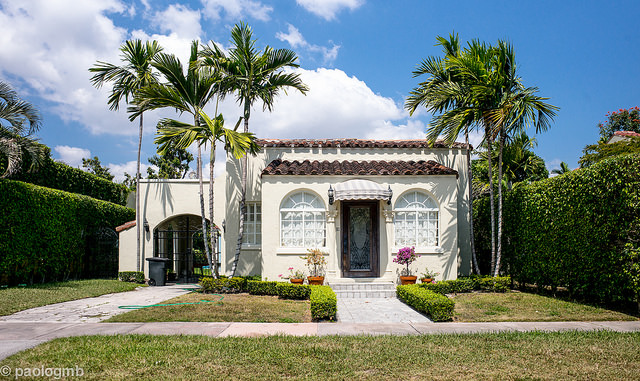Comprised mostly of desert, the Southwestern United States is typically hot, dry, and arid. This area tends to be consistently sunny, with many regions of the southwest seeing 360 days of sunshine per year. The weather of the Southwest does not tend to vary much, so it's important that your Southwest roofing materials can protect your home from the region's nearly constant sun.
The following are some options to help you find the best possible materials for Southwest roofing, to ensure your home be as visually-appealing, comfortable, and energy-efficient as possible.
Southwest Roofing: Clay/Concrete Tiling
Clay tiling is a fantastic option to consider for Southwest roofing. Clay tiles are generally light in color, which means that they also tend to reflect heat away from the home. Even better, clay tiles encourage air circulation, and are a perfect insulator, meaning that they'll keep your home cool on hot days. Finally, clay tiles are durable, and many clay tile roofs have been known to last for decades. Plus, clay tiling blends in perfectly with the design aesthetic of the American Southwest, making it the perfect material for Southwest roofing.
Clay tends to be more expensive that more basic roofing materials, and it's also heavy. If you're planning on installing a clay tile roof, then it's important to ensure your roof's structure can bear the added weight.

Southwest roofing should protect you from the region's heat.| © CC BY-SA 2.0 flickr.com / Paolo Gamba
Southwest Roofing: Rubber Membrane
Another option for Southwest roofing is rubber roofing. Rubber roofing is made of EPDM (ethylene propylene diene monomer), which is a weather-resistant synthetic rubber or thermoplastic material. Typically pliable, this Southwest roofing material has several advantages: it is flexible, durable, and insulates the home from heat. Rubber roofing is also easy to install as it comes in rolls or sheets. Even better, rubber roofing tends to be cheaper than clay and relatively affordable, and can be covered with white reflective coatings to keep temperatures down.
Southwest Roofing: White Metal
White metal roofing has one distinct advantage over other options: it cools quickly at night and only briefly holds onto any heat absorbed during the day, making it an ideal option for Southwest roofing. Although it reflects slightly less heat than tile roofing, white metal is still tremendously reflective, and as a result helps to keep energy costs low. Metal roofing is also very low in maintenance as long as it has been installed correctly and receives proper treatments. In that case, while metal roofing tends to be expensive, the extra costs will even out over time, as white metal roofing requires little maintenance and helps you save on energy bills.
These are just a few Southwest roofing options, but this list is by no means exhaustive. If you're living in the Southwest, it's important to find roofing materials that help you beat the heat and stay cool. To find the best Southwest roofing material, be sure to check out our database of contractors today.